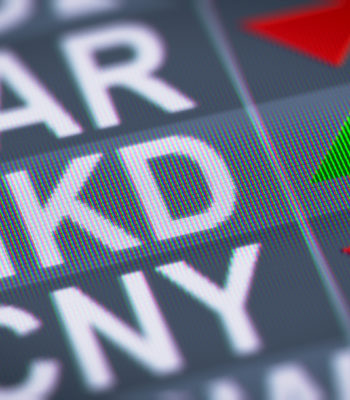
China Devalues: What Does It Mean?
China let the value of the yuan decline sharply for several days in a row and financial markets reacted badly, fearing that China is attempting to gain a trade advantage over its neighbors and risks setting off a currency war. That would result if other countries try to push their currency values down to try to keep China from gaining competitiveness from a weaker currency. Another fear is that China could lose control of the yuan and it could plunge far more sharply. Finally, there is concern that China would not make such a move unless its economy is in far worse shape than it admits. We talked about that risk in last week’s blog.
Before criticizing China as a bad actor on the world financial stage, it is worth looking at history before the past week and looking at exchange rates beyond just the dollar. Until this week, China had maintained a close management to the yuan’s value against the U.S. dollar. It has been roundly criticized for not letting the market decide the value of its currency, most recently in an August 3 International Monetary Fund (IMF) report that concluded that the yuan is not ready to be included in the IMF’s international reserve assets basket known as special drawing rights (SDR), in part because the yuan is closely managed by China. China is eager for its currency to be an international reserve asset, so its move toward letting the yuan find its own value should not have been a surprise. Being criticized for following the IMF’s advice is probably confusing but not terribly disturbing to China’s leaders.
It is also clear that China’s policy of linking the yuan to the dollar has resulted in a fairly dramatic appreciation of the value of the yuan compared to China’s trading partners. In the past year, following the dollar up in value has raised the Chinese real effective exchange rate by 14%.[1] The recent decline of less than 5% barely puts a dent in that one-year rise, let alone the 30%+ increase since 2010.
And looking at competitors’ exchange rates makes the case even more dramatic, since China’s exchange rate has been strong while competitors’ exchange rates have been weak. Brazil and Mexico have both seen their real exchange rates fall significantly over the past year. India’s has not moved recently, but is 10% below 2010, while China is 30% above. Clearly, other competitors have gained very substantial competitive advantages at China’s expense over the past year and more; gains that dwarf any advantage that China could get from the yuan’s declines so far.
But what if the slide in the yuan gets out of control? Those with decades of experience in countries in currency crisis cannot be faulted for worrying about that scenario. But, those were debtor countries facing the burden of paying back loans with depreciating currencies. With state ownership of the banking system and having more than $3.5 trillion in foreign assets, China has no risk of a debt crisis and if forced to, has the ability to step in to again manage the exchange rate.
Like much of the fear over China’s new-found economic power, these worries about the exchange rate seem way overblown. China’s moves so far to:
- Address the IMF’s urging that the market determine the yuan’s value
- Bring the yuan back closer in line to nearly every currency except the dollar
- Undo a small part of the competitive damage of the yuan’s strength just in the past year
…all seem very reasonable in the context of what has happened elsewhere in the world, despite being disturbing to traders who have been accustomed to tight control exerted by the government.
[1] The Bank for International Settlements calculates its exchange rate average across trading partners, adjusted for local prices, as a guide to competitiveness.




